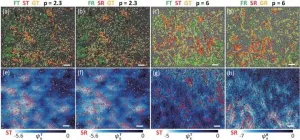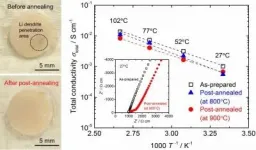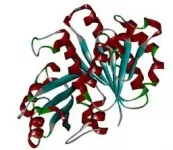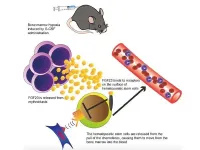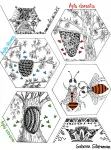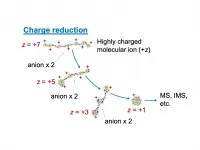Broadening horizons for people with quadriplegia
2021-01-19
(Press-News.org) A system that uses flexible, breathable magnetic skin allows people with severe quadriplegia to move around and choose their surroundings. Developed by KAUST researchers, the high-tech system relies on the user's facial expressions to accomplish a wide variety of tasks, from moving down the street to using an elevator.
There are a wide variety of assistive technologies for people with quadriplegia, but most systems are not suitable for patients with severe quadriplegia as they often rely on head or neck movements to work. For these patients, the options are limited to camera, tongue control, voice-assistant and neural detector systems. But these either offer a limited range of gestures or are not compatible with outdoor applications. Some also require invasive attachments or continuous attention while using the system.
"Most existing technologies don't give people a lot of freedom," says Abdullah Almansouri, a Ph.D. student in KAUST. "We wanted to develop a solution that works inside the house as well as outdoors, allowing them to move around independently."
The new integrated system includes magnetic skins, smart glasses, a smart wheelchair and smart gadgets that rely on wireless Bluetooth and infrared communication.
The three magnetic skins are placed between the eyebrows and on each side of the nose to track facial movements, such as moving the eyebrows up and down and the nose left and right. These movements are detected by magnetic field sensors in the smart glasses and are converted into electrical signals that are transmitted to the head unit of the wheelchair.
This unit processes these signals into wheelchair or smart gadget commands, such as turning the lights on or clicking the mouse on a computer. The system currently supports 13 distinct facial gestures.
"We were aiming for something easy and accessible but also that couldn't be easily triggered by accident," says Almansouri. "The system itself handles the complexity, so the user is only wearing the glasses and magnetic skin to control their surroundings."
With his team, Almansouri tested the system on three able-bodied users with a high success rate. The participants took less than 15 minutes to learn how to use the system without assistance, with a worst-case success rate of 93 percent.
"The synergetic combination of advanced sensor technology and machine learning will definitely improve quality of life," says Khaled Salama, professor of electrical and computer engineering at KAUST's Advanced Membranes and Porous Materials Center. "This combination has the potential to be a game-changer in so many applications."
INFORMATION:
ELSE PRESS RELEASES FROM THIS DATE:
2021-01-19
Naltrexone, used either alone or together with disulfiram or acamprosate, is associated with a decreased risk of hospitalization due to alcohol use disorder (AUD) when compared with non-use of AUD drugs, a new register-based study shows. The same associations were noticed for hospitalization due to any cause. Disulfiram use and polytherapy with two or more drugs indicated for AUD was associated with a decreased risk of hospitalization due to alcohol-related somatic causes. None of the studied medications were associated with mortality or work disability (sickness absence or disability pension). The study was published in Addiction.
Benzodiazepine use linked to harmful effects
As benzodiazepine use is common among persons with AUD, the ...
2021-01-19
Various glass materials have been essential to the development of modern civilization due to their advantageous properties. Specifically, glasses have a liquid-like disordered structure but solid-like mechanical properties. This leads to one of the central mysteries of glasses: "Why don't glasses flow like liquids?" This question is so important that it was selected by the journal Science in 2005 as one of 125 key, unanswered scientific questions, and one of 11 unsolved important physical issues.
We can hardly observe the movements of atoms at a ~0.1 nanometer length scale and a ~1 ...
2021-01-19
Overview:
A research team in the Department of Electrical and Electronic Information Engineering at Toyohashi University of Technology and the Department of Chemistry at University of Calgary has investigated the effect of post-annealing for healing Li garnet solid electrolyte degraded by the growth of Li dendrites. The ionic conductivity of the annealed solid electrolyte was slightly lower than that of the electrolyte before annealing but was retained above 10?4 S cm?1 at room temperature. The electrochemical results obtained indicate the possibility of reusing the solid electrolyte degraded by the growth of Li dendrites in another all-solid-state Li battery.
Details:
A ...
2021-01-19
Overview:
The research team of the Department of Computer Science and Engineering at the Toyohashi University of Technology and the Institute of Food Biotechnology and Genomics at the National Academy of Sciences of Ukraine have proposed a new drug to treat tuberculosis (TB), utilizing the state-of-the-art molecular simulations. This drug may inhibit the cell division of Mycobacterium tuberculosis (M. tuberculosis) and suppress its growth. In addition, because this drug acts on the enzymes secreted by M. tuberculosis instead of acting on M. tuberculosis itself, M. tuberculosis ...
2021-01-19
"The real voyage of discovery consists not in seeking new landscapes, but in having new eyes."
Scientists would vouch for this statement because scientific pursuit has the habit of offering chance discoveries if we think about things differently.
In the lab of Arati Ramesh at the NCBS, the team loves to spy on the structure and sequence of Ribonucleic acids (RNAs; molecules that decrypt an organism's genetic code into protein messages). During one such instance, graduate students in Arati's lab were peering at a family of nickel and cobalt (NiCo RNAs) sensing bacterial RNAs that have a clover leaf-like structure. ...
2021-01-19
A Kobe University research group including graduate student ISHII Shinichi and Associate Professor KATAYAMA Yoshio (both of the Department of Hematology, Graduate School of Medicine) have discovered that fibroblast growth factor-23 (FGF23) produced by erythroblasts (cells that are the precursors of red blood cells) promotes the movement (mobilization) of hematopoietic stem cells (*1) into the peripheral blood. Up until now, FGF23 has been known for the role it plays in the kidneys as a hormone which regulates phosphate concentrations throughout the body.
It is hoped that this discovery will enable new strategies to be developed for harvesting hematopoietic ...
2021-01-19
It is early in the morning. Ebi and his colleagues try not to twitch as they stare intently at a rectangular box filled with sugary treats. These aren't for them, but for the honey bees that they study. The tiny buzzers toggle between the sugar 'feeder' and the hive, which are a few metres apart. Interestingly, the bees that visit the feeder aren't secretive about this new found food source. They graciously advertise its location to their nest mates and over time more bees are seen buzzing to the feeder.
This behavior has been observed and researched for decades; but still, the question of how bees communicate within the noisy quarters ...
2021-01-19
Mass spectrometers (MS) have become essential tools in chemistry and biology laboratories. The ability to quickly identify the chemical components in a sample allows them to take part in a diverse array of experiments, including radiocarbon dating, protein analysis, and monitoring drug metabolism.
MS instruments work by giving the analyte molecules an electric charge, and shooting them through a region of space with a uniform electric field, which curves their trajectory into a circle. The radius of the circle, which depends on the ratio of the molecule's mass to its charge, is detected and compared with known samples. Because the method can only measure this ratio, not the mass itself, excess charges can lead to inaccurate or ambiguous results.
Now, a team of researchers lead ...
2021-01-19
"Stripy zebra, spotty leopard, ...". Kids never become bored pinpointing animals based on their unique body patterns. While it is fascinating that living creatures develop distinct patterns on their skin, what may be even more mysterious is their striking similarity to the skin of frozen liquid metals.
Pattern formation is a classic example of one of nature's wonders that scientists have pondered for centuries. Around 1952, the famous mathematician Alan Turing (father of modern computers) came up with a conceptual model to explain the pattern formation process of a two-substance system. Such patterns are also called Turing patterns thereafter.
Pattern formation is also commonly adopted by manmade systems and this is especially true in the ...
2021-01-19
Fungi are among the world's oldest and most tenacious organisms. They are now showing great promise to become one of the most useful materials for producing textiles, gadgets and other construction materials. The joint research venture undertaken by the University of the West of England, Bristol, the U.K. (UWE Bristol) and collaborators from Mogu S.r.l., Italy, Istituto Italiano di Tecnologia, Torino, Italy and the Faculty of Computer Science, Multimedia and Telecommunications of the Universitat Oberta de Catalunya (UOC) has demonstrated that fungi possess ...
LAST 30 PRESS RELEASES:
[Press-News.org] Broadening horizons for people with quadriplegia

